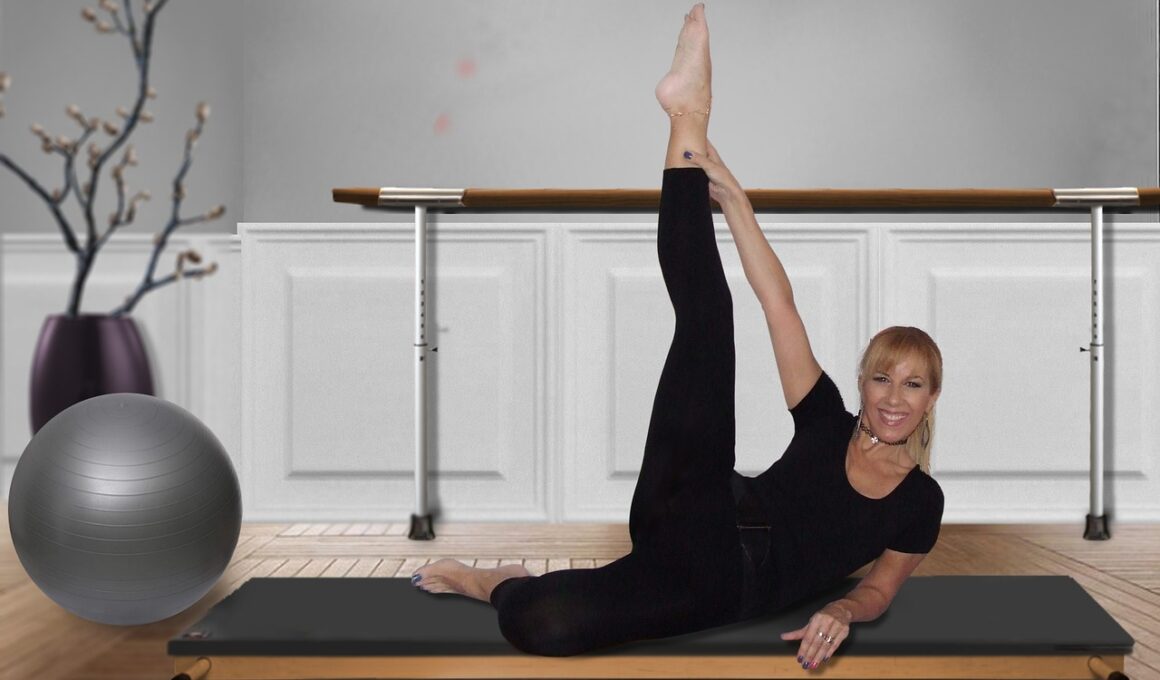Building a Successful Pilates Class as a New Instructor
As a new Pilates instructor, creating a successful class requires careful planning and a clear understanding of your students’ needs. Start by defining your target audience; consider factors such as age, fitness levels, and experience. Once you identify your ideal participant, you can tailor your classes to suit their unique requirements. Ensure that you differentiate your teaching style by incorporating various Pilates techniques, which engages students effectively. Utilize class objectives to align with the goals of your students, which could include improving strength, flexibility, or overall wellness. Establishing a strong connection with attendees will enhance their experience and lead to higher retention rates. Making the environment comfortable is also essential for success. Invest in quality mats and props, and pay attention to the ambiance, ensuring it is both inspiring and welcoming. Encourage feedback after classes to continually improve, as student input is invaluable. Creating a successful class involves more than technical skills; emotional intelligence is crucial to forming meaningful relationships with attendees, fostering a supportive community, and promoting a long-term commitment to Pilates.
In addition to careful planning, effective communication plays a critical role in your success as a Pilates instructor. It’s important to clearly articulate instructions, making them easy to follow for every participant. Utilize a variety of verbal and non-verbal cues to engage your students; provide demonstrations to illustrate movements. Consider the pace of your class, ensuring it accommodates all levels. Strive for clarity by breaking down complex exercises into manageable steps. Make sure to offer modifications for different fitness levels or any physical limitations. A supportive atmosphere where everyone can thrive, regardless of their starting point, is crucial. Foster a sense of belonging; encourage camaraderie among your participants, as this can enhance their commitment to the practice and each other. Invite questions throughout your session, creating a dialogue that reinforces understanding. Use inclusive language to make everyone feel valued and heard. Remember to motivate and inspire with positive reinforcement; celebrate accomplishments, no matter how small. Always approach teaching with enthusiasm, as your energy will inspire your students to engage and cultivate their passion for Pilates.
Structuring Your Pilates Class
Structuring your Pilates class effectively is essential for guiding your students through a fulfilling experience. Each session should typically comprise a warm-up, main segment, and cool-down, ensuring participants remain safe while maximizing benefits. Start with gentle movements to warm up muscles, focusing on breath awareness, alignment, and engaging core muscles. Gradually progress from foundational exercises that accommodate beginners to more complex sequences as students gain confidence and ability. Incorporate a variety of props, such as resistance bands, Pilates balls, and foam rollers, to enhance the class experience. This keeps workouts fresh and encourages exploration. Plan the intensity of your exercises, balancing challenging movements with easier alternatives to maintain engagement and progression. Be sure to integrate flows within your sessions that connect movements seamlessly. Maintain the right tempo, allowing enough time for transitions and modifications. Post-class, offer students insights about their practice and how they can continue developing. This feedback loop is indispensable; it demonstrates your investment in their growth while empowering them to embrace Pilates beyond the classroom setting.
Class marketing is another crucial aspect of building a successful Pilates program. Utilize social media platforms to establish your brand presence and connect with potential clients. Share informative content, such as tips, exercise videos, or testimonials with engaging captions that resonate with your audience. Incorporate hashtags related to fitness and Pilates to increase your visibility online. Consider partnerships with local wellness centers or health clubs for cross-promotion, and participate in community events or workshops to showcase your teaching skills. Word-of-mouth advertising from existing clients can also be powerful; consider offering referral discounts to incentivize sharing your classes with friends. Create a professional website or dedicated social media page showcasing your credentials, offering class schedules, and providing information about class content. Regularly update your offerings and attract new students through promotions or complimentary introductory classes. As an emerging instructor, establishing an online presence will set you apart from competitors, creating a strong online community. Cultivating a robust marketing strategy ensures you reach a broader audience, increasing your chances of building a dedicated client base.
Fostering a Community Atmosphere
Creating a sense of community among your Pilates students elevates the class experience and promotes long-term retention. Encourage participant interaction by incorporating partner exercises or group activities, as this fosters connections between students. Engaging in community-building activities encourages a sense of belonging. Consider creating a private online group or forum where attendees can share their experiences, challenges, and successes. This can help build relationships outside class time and foster support within your group. Promote social events or workshops that extend beyond the traditional classroom setting, offering opportunities for students to bond further. Use your communication skills to welcome newcomers, ensuring everyone feels included. Begin each session with introductions, allowing attendees to share their goals and preferences, helping you tailor exercises accordingly. Finally, inspire your students by sharing your own journey as a Pilates instructor, including successes and challenges you’ve navigated. This transparency will resonate with your audience and demonstrate your authenticity. When students feel connected, they’re more likely to stay committed to their practice, continuing to enrich the community you’ve built.
As you develop your skills as a Pilates instructor, prioritizing your own professional development is crucial for sustained success. Attend workshops, conferences, or training sessions to deepen your understanding of different Pilates techniques and teaching methods. Embrace mentorship opportunities to gain insights from more experienced instructors who can guide you along your teaching journey. Seek feedback from colleagues and your students, as this can provide valuable perspectives that will help you enhance your approach. Stay updated about advancements in the Pilates community and trends that can enrich your teaching style. Engage in networking within the fitness industry and build relationships with like-minded professionals who inspire your growth. Reading relevant literature or joining professional organizations related to Pilates will also support your development. Continuous learning helps you provide a more educational experience for your students. Share your newfound knowledge with your classes, which not only fills the instructional gap but also demonstrates your commitment to their progress. Align your personal growth with your teaching, ultimately contributing to an inspiring atmosphere for your students and ensuring lasting success in your Pilates career.
Conclusion: Commitment and Adaptability
Building a successful Pilates class as a new instructor takes time, commitment, and adaptability. Acknowledge that initial challenges are normal, yet embrace them as opportunities for growth. Continuously assess both your teaching strategies and students’ feedback to refine your approach. Validating their experiences will reinforce your commitment to creating an exceptional environment for everyone. Stay open to evolving your class structure and offerings in response to changing trends and participant needs. Collaboration within the Pilates community allows for shared resources and innovative ideas. Acknowledge and celebrate your students’ achievements, fostering motivation and adherence to their practice. Remain proactive in addressing challenges; proactively adjust your plans when needed to accommodate. As you develop confidence in your teaching abilities, remain focused on your passion for Pilates, which will naturally attract students eager to share in the journey. Remember that fostering a healthy relationship with your participants is essential, ensuring their comfort, progress, and satisfaction. Commitment to your craft, coupled with the ability to adapt and grow, ensures long-term success as a Pilates instructor.


